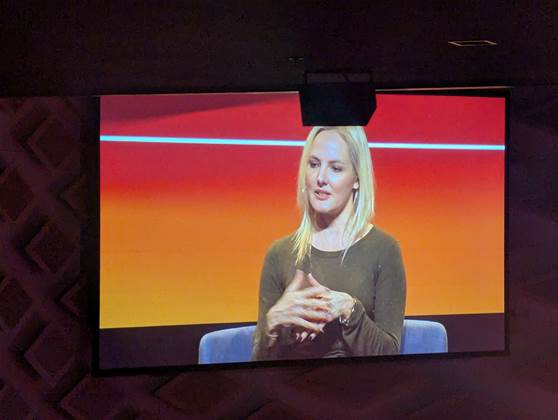AI ‘thought partner’ poised to augment Australian workers – Partner Content
Artificial intelligence potential for huge productivity gains as traditional roles recast
Need to know: How AI became our office sidekick
- The benefits of AI in the workplace come from augmenting workers, not replacing them, says Slack, a Salesforce company.
- AI tasks such as summarisation and ideation improved decision-making quality.
- AI freed workers to focus on human relationship building and higher-value tasks.
- AI was impacting many jobs but would tend to transform rather than eliminate roles.
- As with many labour-saving and productivity building technologies before it, Australians were early adopters of AI.
Just as search engines and voice assistants now guide us, the coming wave of artificial intelligence was poised to become our “thought partner”, helping to jumpstart our human thinking processes.
As an example, Australians were already asking their artificial intelligences (AI) to create versions of a plan for brainstorming that led to better decision-making, said Salesforce technology evangelist, Derek Laney.
“AI is becoming a creative thought partner,” Laney said. “I’m starting to use it to stimulate my [thinking] with examples. And then I’m more likely to come to something that makes sense for the business.”
And while AI would cut mundane tasks in ever more jobs, replacement of human workers was unlikely.
AI-powered Australian productivity boom just over the horizon
Laney said Slack’s research found that Australian workers lapping up AI’s benefits were “saving three to four hours a week in automation”.
Big productivity boosts have led to a wave of adoption, said Laney, even if there is still anxiety about how AI will impact workers.
“We just took a real look at this number, and it’s jumped from one in five [workers adopting AI] to one four — that’s a big leap in just six months,” Laney said.
Much of this adoption could be attributed to time savings from AI aiding in routine tasks. He cited research that found about half of a typical workday was lost on “low-value tasks that AI could help with”. Offloading such menial duties to AI liberated workers to engage in higher-value tasks.
Summarisation or ‘catch-up AI’ was also easing workers’ burdens, endearing it to thousands of Australians by instantly synthesising complex information, he said.
“Rather than having to read everything that’s been going on with a project, just give me a summary of what happened so that I can get up to speed faster and start to take action,” Laney said.
While tasks in some jobs may be automated, AI was unlikely to replace entire roles, he said. He noted that although up to 80 per cent of jobs had tasks open to AI, they were more likely to be augmented rather than replaced.
“Using AI alongside customer service [was] a great way to free up time for relationship building” rather than answering repetitive queries, Laney said.
This allowed workers to focus on human skills that were trickier to automate, such as creative and interpersonal abilities.
Natural language search functions also sped workers through their day, helping them to find what they needed more swiftly.
“Instead of scrolling through three pages of results, looking for the needle in the haystack, the AI will read that for us and then synthesise the answer to the question. It feels like magic when you start using it for the first time.”
Want to know more about how Slack’s AI powers you through your work day and eases the burdens on your team, head to the iTnews podcast with Derek Laney at itnews.com.au and click on the podcast tab at the top.
AI by the numbers – How the researchers perceive the coming era of AI augmentation in the workplace
- A MIT study found that AI was unlikely to replace whole jobs, at least not until further in the future than had been prophesied.
- 80 per cent of job roles have at least one in 10 tasks exposed to AI, but just 19 per cent of jobs had more than half of their tasks exposed.
- Slack research found that Australians wasted 47 per cent of their workday on low-value tasks with which AI could assist.
- Pew Research found most jobs have some tasks that could be automated, but most job functions need human-AI augmentation rather than full replacement.
Source link






